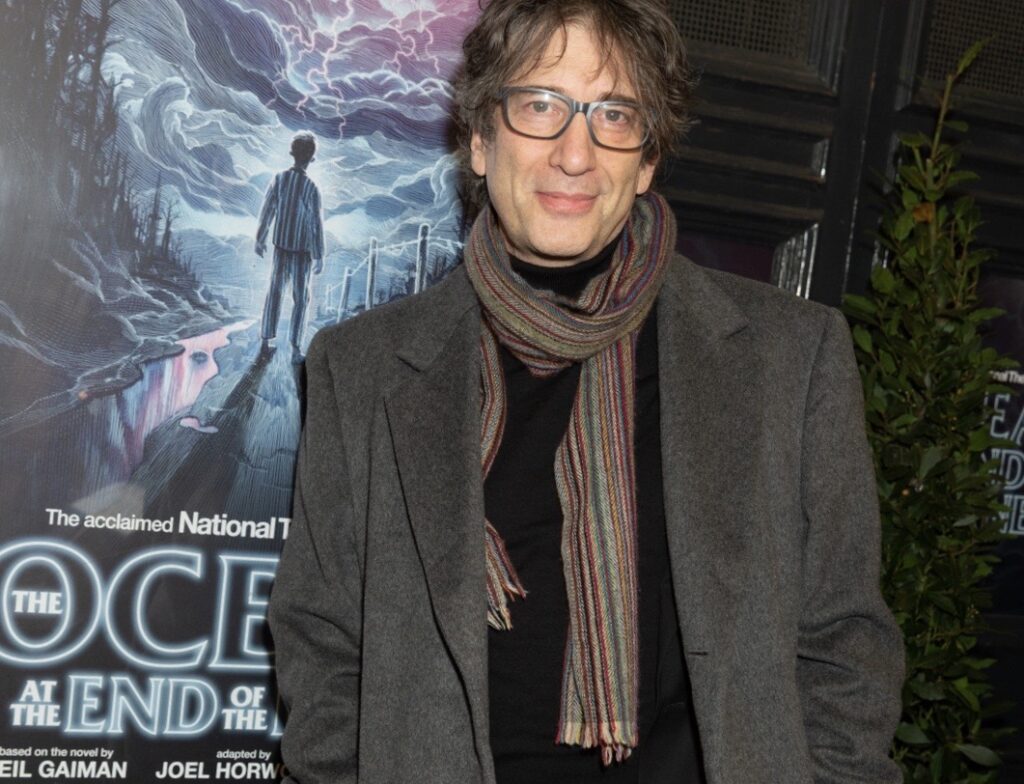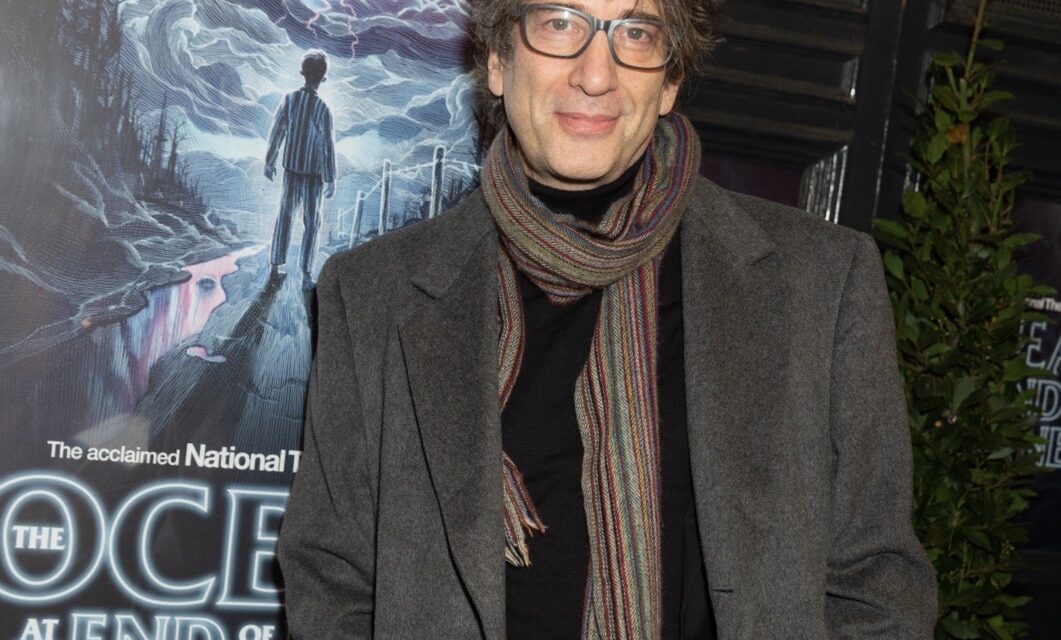
No.1 Sunday Times and New York Times bestselling author, Neil Gaiman tells Vicky Edwards about the National Theatre’s acclaimed stage adaptation based on his novel The Ocean at the End of the Lane, which is on stage at the Theatre Royal Bath now until Saturday 18th March.
The old adage cautions against meeting your heroes lest they fail to live up to expectation. Nothing is said about meeting your children’s heroes, but nevertheless my teenage daughter issues a firm instruction: I am to say NOTHING about meeting Neil Gaiman ‘unless he is as brilliant and fab as I want him to be.’
So it is with some trepidation that I ask the author to tell me about the forthcoming tour of the National Theatre’s adaptation of his award-winning book, The Ocean at the End of the Lane – a story that has its roots in his own childhood.
“It began with me wanting to try and explain to my wife where I grew up and what that world was like. I couldn’t take her to where I grew up [in East Grinstead] because the place had long since been demolished; it’s now covered by lots of lovely, neat little housing estates. So it was kind of an effort to try and evoke a past and a sense of place,” he says, confessing that the novel (Book of the Year in 2013 and with more than 1.2 million copies sold to date), had been rattling around his head for a while.
“I literally took the oldest idea that I had ever had. I think it’s strange that at the age of 61 I still haven’t used up all the ideas that I had for stories before I was 40,” he muses.
And he’s certainly no slouch at writing stories. Including chart-topping graphic novels like Stardust, The Sandman, Coraline and also Good Omens (co-authored with the late Sir Terry Pratchett), Gaiman has more than 45 books and short stories to his name, as well as numerous screen writing projects. Many of his books have been adapted for film and television, with The Ocean at the End of the Lane, the first major stage adaptation of his work, being transferred to the West End in 2021.
And the play version is fully realised on stage. Katy Rudd (director) and Joel Horwood (script adaptor) are joined by a team whose collective efforts secured both critical and audience acclaim on the play’s premiere at the National Theatre. But how does Gaiman feel about adaptations of his stories?
“Firstly, we struck gold with Katy. She is emerging as one of our great directors and I feel very fortunate at having begun work with her on Ocean at the early stages of her career. But I am astonishingly Darwinian in my take on adaptation. The adaptation of my very first graphic novel was so faithful; every word was up there on that stage. And it didn’t work. And it didn’t work because moments that were important in the graphic novel became throwaway on the stage. Moments that were minor brief allusions became huge and overpowering. I realised then that you have to translate. The actual translation is now the thing that I get excited about: what can you do on the stage that you can’t do in a book?”
A thrilling adventure that blends magic with memory in a tour-de-force of storytelling and takes audiences on an epic journey, he admits that he didn’t know, initially, if it could work.
“I liked Katy and Joel and their collaborators and I thought their heads were in the right place, but I didn’t really know if it would work. Then I went to the first complete run-through. About ten minutes before the end I realised that I had tears running down my face. I went home and said to my wife ‘this is amazing.’”
And now audiences across the UK can immerse themselves in the book’s magical world.
And there are some places on the tour schedule that have special relevance to Gaiman.
“I love Bath. It’s one of my favourite places to do book signings, which are usually scheduled around lunch time. It’s a beautiful place and I am always happy to be there.”
From places to people, I ask about the story’s focus on family, especially the relationship between parent and child.
“I created a semi-fictional family for myself, but the boy was definitely me. I love that Joel and Katy, just by the genius of having the same actor play the father and the adult boy, give you that sense of continuity; of personhood. Like it or not, there will come a point when you will look into the mirror and see one of your parents. And then later, you encounter one of your grandparents.”
And even though he has now seen it multiple times, the play still takes him by surprise.
“There are moments of utter theatrical magic, but the things that demolish me emotionally are the moments of forgiveness, or a hug between two characters. The internet phrase for it is ‘all the feels’ and really it is the emotion that I hope people will take away. I’d love it if you took away what it was like to be a kid and to have less power. And of course there is the astonishing puppetry and magic. I had always dreamed of stage magic being used for seamless illusion. This is always in service of the story, but you’re going to see miracles,” he promises.
Time is up, but before we say goodbye I tell him that my daughter is a huge fan. His pleasure is genuine.
“There is no job satisfaction in someone telling you that you sold a million books. But when someone tells you that they read Coraline at the age of 9 and that it was their best book; that it scared them but that they still kept it wherever they went? Then my job is done.”
Later, I reassure my child. Neil Gaiman is every bit ‘as brilliant and fab’ as she could possibly hope.
The Ocean at the End of the Lane appears at the Theatre Royal Bath from Tuesday 7th March to Saturday 18th March. Tickets are on sale at the Theatre Royal Bath Box Office on 01225 448844 and online at www.theatreroyal.org.uk
Photo credit: Piers Allardyce


